From the content of the article
Autumn is the perfect time for laser treatments – from removing tattoos and post-acne scars, broken vessels and other skin imperfections, to anti-wrinkle and rejuvenation treatments. They are contraindicated in summer, as exposure to the sun can further sensitize the skin after laser therapy and the risk of hyperpigmentation can occur. Also, autumn is the season when a mole control is recommended, in order to evaluate any changes that have appeared after exposure to the sun.
You can do it, in a national first, with the help of artificial intelligence, which forms an unbeatable team with the latest technology. Dr. Lucian Russu, dermatology-venerology specialist at Bioderm Hospital, tells more.
-
Check your moles with new AI technology
Regular evaluation of moles, twice a year, is necessary to prevent skin cancer. Today, technology offers a revolutionary solution: the Skeen digital dermatoscope, which combines artificial intelligence with high-precision imaging. The new device enables rapid visualization of lesions, accurate photography and safe storage of images and data. Skeen provides high-precision skin imaging, both polarized and unpolarized, optimized for in-depth visualization of skin and scalp structures.
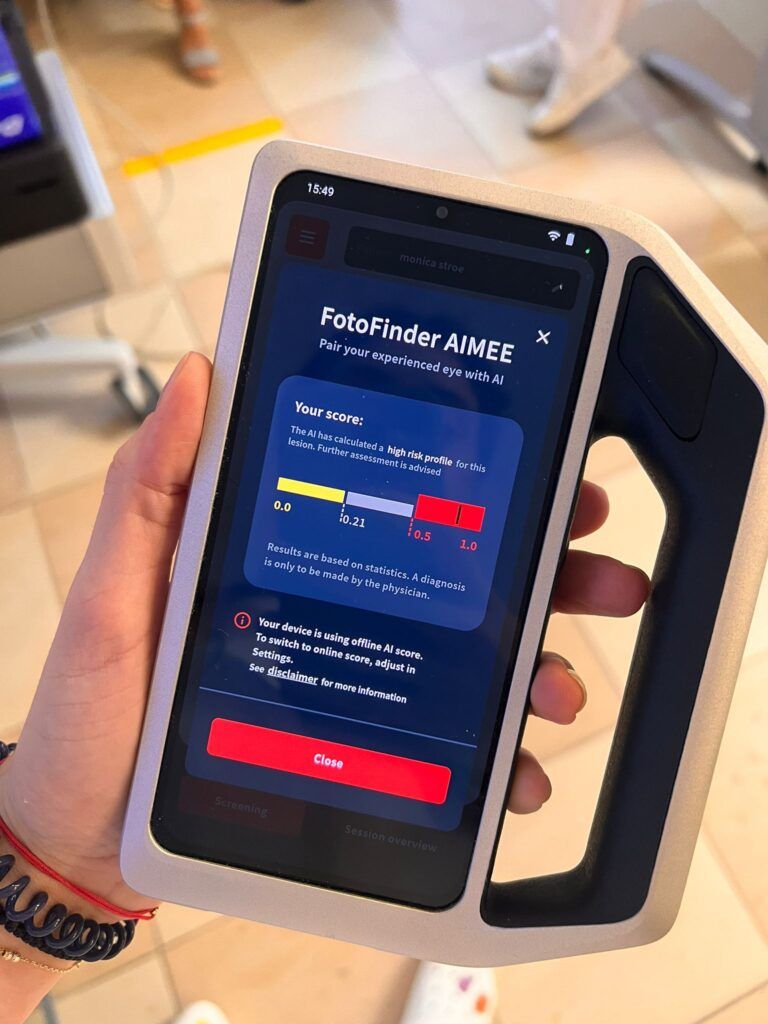
With the AI assistant, moles and skin lesions are quickly and efficiently assessed, providing a risk score on the spot. Artificial intelligence allows early intervention, essential especially in the case of melanoma, the most aggressive form of skin cancer. The speed and accuracy of the analysis can make the difference in early diagnosis.
“The partnership between an experienced doctor and AI offers maximum efficiency! Artificial intelligence takes skin cancer screening to another level, offering even more accuracy and speed. Speed in case analysis, speed of reaction, speed that can make a difference in melanoma, the most aggressive form of skin cancer. It is a new step forward in the mission we have undertaken since 1999, when we first introduced digital dermatoscopy in Romania.
We have been on the frontline of skin cancer prevention through free actions across the country with the Melanoma MayDay mobile dermatoscopy unit, and have continued this mission with the opening of the new dermatology hospital earlier this year, now followed by the introduction of an innovative system of digital dermatoscopy in a national premiere”, says Dr. Lucian Russu, dermatovenerologist.
The incidence of skin cancer is increasing in recent years as a result of burns (excessive exposure to the sun), climate change and the habit of artificial tanning in tanning beds. Squamous cell carcinoma of the skin is the second most common form of skin cancer, characterized by abnormal and accelerated growth of squamous cells – a type of epithelial cells that make up the epidermis. When caught early, most SCCs are treatable.
Among skin cancers, melanoma is the most aggressive form: 75% of people diagnosed with metastatic melanoma die within the first year of diagnosis. Caught at an early stage, melanoma can be cured in 95% proportion, dermatoscopy – a non-invasive and painless investigation – plays an important role in prevention. In recent decades, the frequency of melanoma has increased more than 15 times, affecting more and more young people. Melanoma is the sixth most common cancer in both men and women.
-
Get rid of post-acne scars
Acne can leave behind scars that are just as unsightly as the condition itself. Fortunately, they can be significantly alleviated with the help of laser therapies. One of these is the fractional CO2 laser, recognized for its effectiveness in the resurfacing and treatment of post-acne scars, keloid and post-interventional scars.
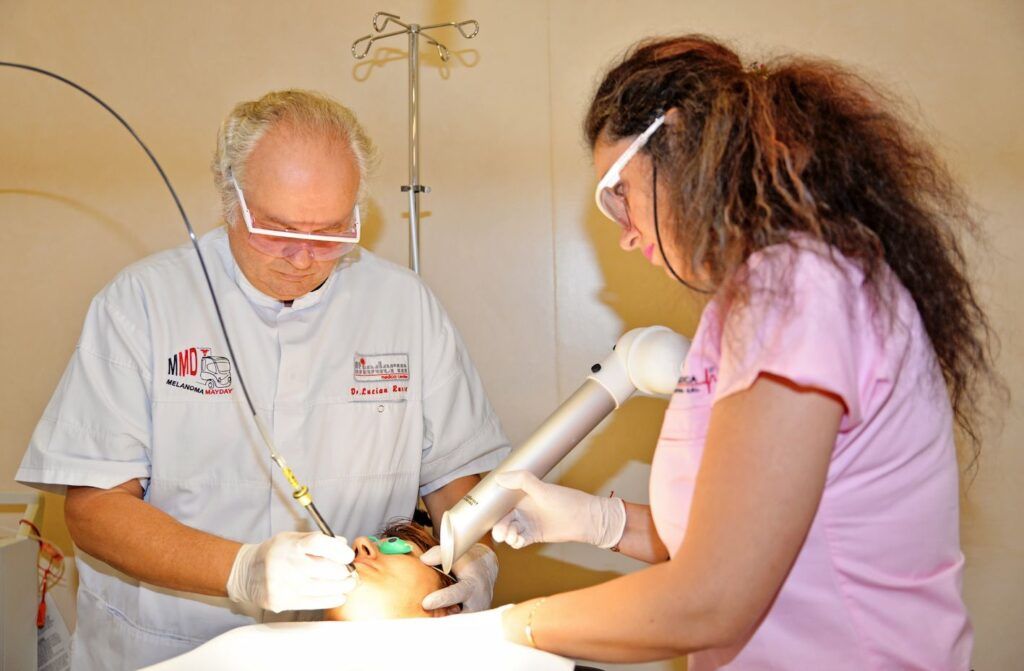
“The superficial burn produced by the fractional CO2 laser stimulates the skin’s collagen synthesis, causing an obvious improvement in skin texture and tone, with the reduction of fine wrinkles as well as discoloration (red or brown spots),” explains the dermatologist.
-
The solution for flawless feet
Broken vessels (athletics) are a common problem that prevents many women from exposing their legs. They are caused either by an inherited capillary fragility or by more serious conditions, such as venous insufficiency, which can also lead to the appearance of varicose veins.
Currently, the best method of treatment is laser, with Nd:Yag and Diode being just a few examples of lasers. “The vascular laser is applied to the respective vessel, coagulating the hemoglobin, and thus the blood vessel resorbs. Lasers use a predetermined wavelength to target and destroy unwanted capillaries and vessels, leaving the surrounding normal tissues intact,” explains dermatologist Lucian Russu.
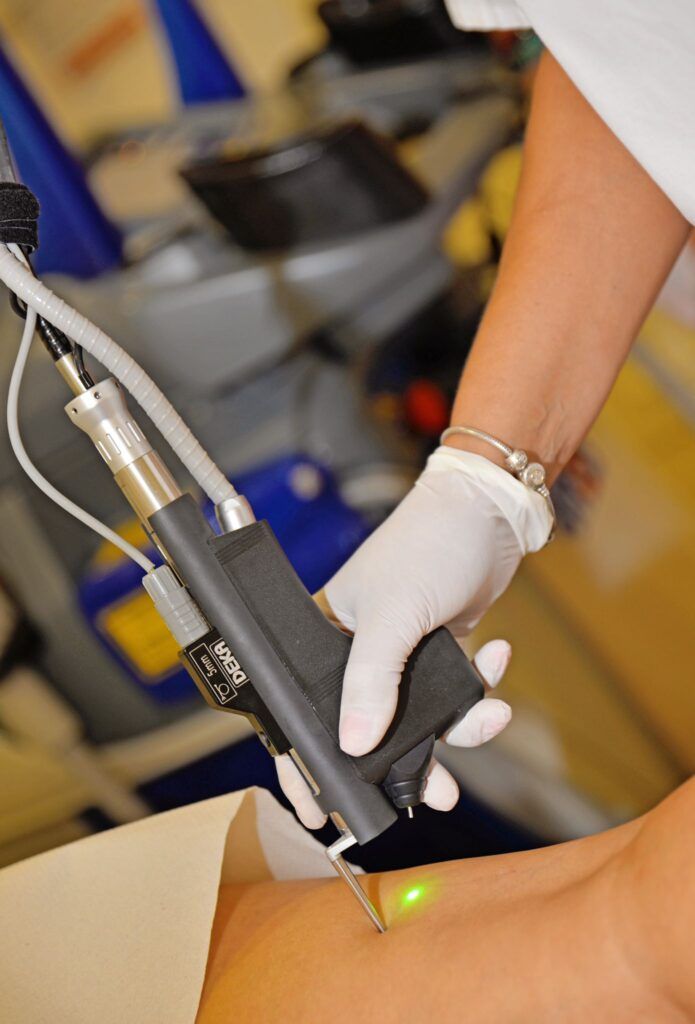
For broken vessels on the face, the doctor’s recommendation is the Diode laser, which does selective coagulation of the superficial vessels. “Also with the help of vascular lasers, other related problems can be treated, such as hemangiomas, angiomas, rosacea, ruby points, facial or décolleté erythema.”
A procedure takes 20-30 minutes. In total, 3-4 sessions are needed for the same area, with one-month breaks between them. The intervention does not require a recovery period. As they work deep, the lasers do not damage the skin or leave scars, and the good news is that once treated with the laser, the broken vessels do not reappear. Instead, new broken vessels may appear in other areas if there is a genetic predisposition. For larger and more obvious broken vessels, doctors also recommend drug treatment along with laser therapy.
-
From baldness to barbershop, in 3 months
Alopecia is the main cause of hair loss in men and women. Until a few years ago, the treatment was done only with a few drugs, which acted locally, but which were irritating and could also have a series of adverse effects. Cosmetic surgery, on the other hand, i.e. hair implant, is still a very expensive and invasive option, so in the last decade, non-invasive treatments have gained ground.
Low-frequency laser therapies represent, at present, the most effective non-invasive and non-surgical treatment method for alopecia, something also proven by a study published in 2018 by the prestigious publication “Journal of The European Academy of Dermatology and Venerology” . One of these low-frequency laser therapies successfully used in the treatment of alopecia is the Sunetics laser, a safe and science-based method – approved by the US Food and Drug Administration – that stimulates hair growth in people with alopecia who still retain hair follicles. hair.
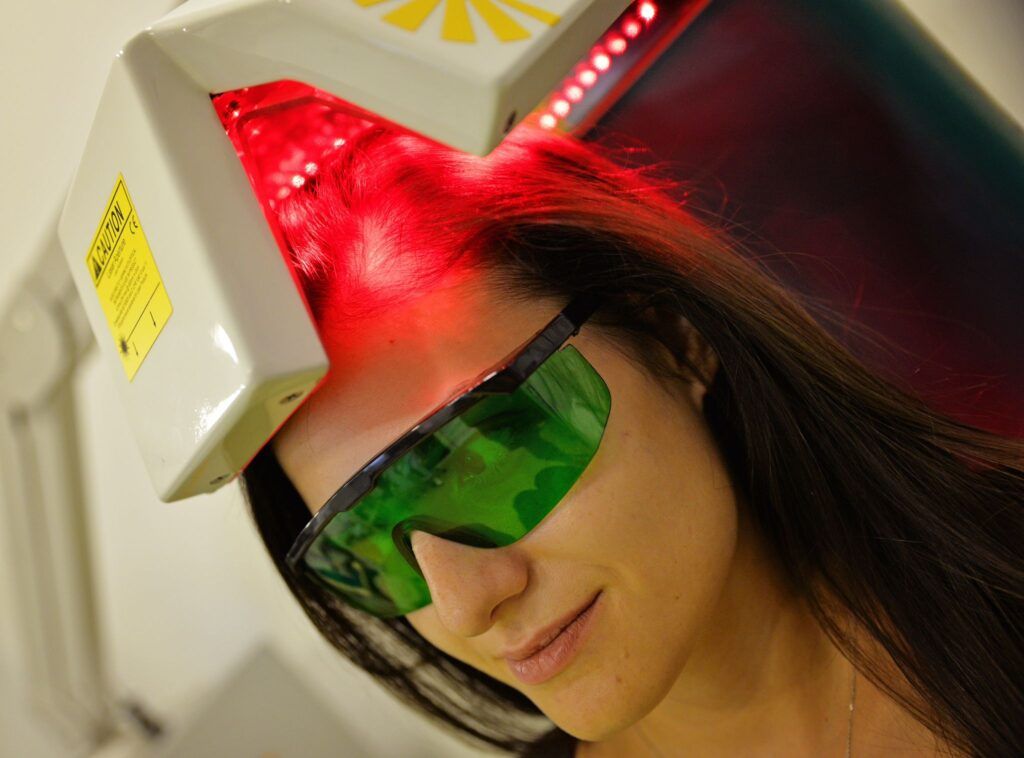
How does it work? “The laser emits a low-intensity red light that does not cause discomfort or pain. The light penetrates approximately 4 millimeters deep into the skin, stimulating cellular metabolism, cellular regeneration and blood circulation,” explains Dr. Lucian Russu.
To combat alopecia, approximately 50 sessions with the Sunetics laser are needed during a year. A session lasts 20-30 minutes, during which the patient sits under the device that covers the entire area of the scalp, acting deep into the skin of the scalp.
“After only three months of treatment with Laser Sunetics, excessive hair loss stops, then, after 4-5 months of treatment, existing hair becomes thicker, shinier and visibly healthier,” adds Dr. Russu.
The Sunetics laser is only contraindicated for patients suffering from glaucoma, cataracts, retinal detachment, ocular photosensitivity, people with systemic diseases – lupus, active herpes infections, bacterial skin infections, skin sensitivity or neuropsychiatric disorders.
-
The secret of youth without a scalpel
Mesotherapy, skinbooster, microneedling, Punto laser and PlasmAGE are just some of the therapies that help to rejuvenate, without pain, scalpel or long recovery.
Mesotherapy works as a dose of freshness for the skin. By directly injecting vitamins, antioxidants and hyaluronic acid, this treatment stimulates collagen, improves skin elasticity and makes wrinkles less visible. It’s ideal if you’re dealing with dehydrated, lackluster skin or even fine lines.
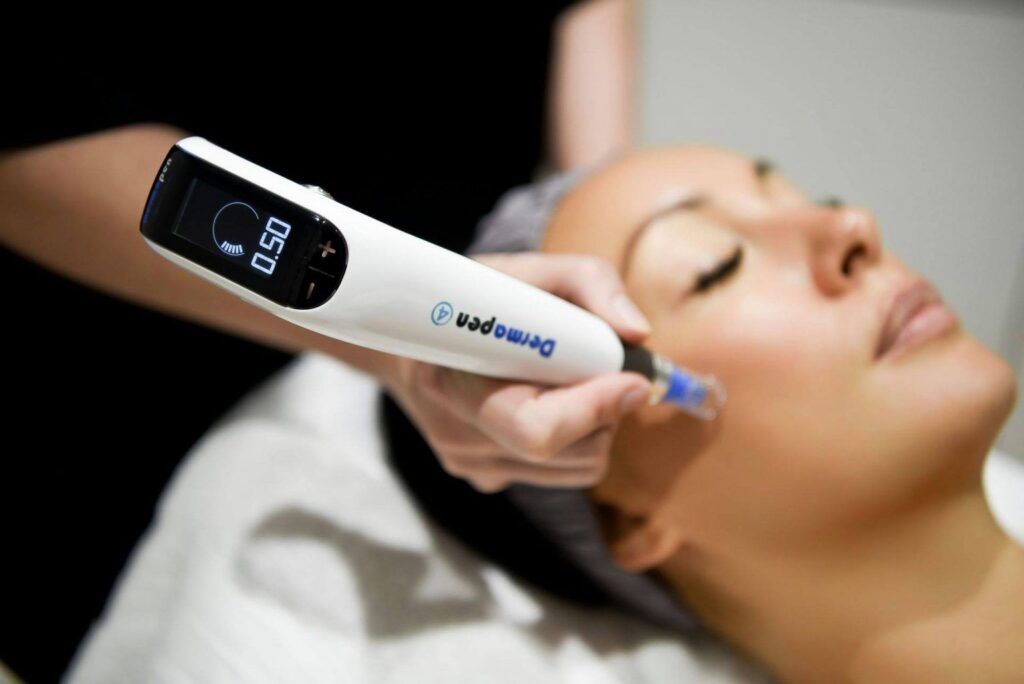
The Skinbooster takes hydration to another level with stabilized hyaluronic acid that penetrates deep into the skin, contributing to a velvety, luminous and rejuvenated complexion, without changing the shape or contour of the face.
For those who want to improve their skin texture, microneedling is one of the most indicated treatments. This procedure involves the use of micro-needles to create small lesions in the skin, stimulating cell regeneration and collagen production. It is the ideal solution for fading fine lines, scars and hyperpigmentation.
If you want even faster results, the Punto CO2 laser is recommended. By generating micro-lesions in the deep layers of the skin, the laser stimulates collagen and regenerates tissue affected by scars, wrinkles or other imperfections. The results: smooth, firm and visibly rejuvenated skin with no downtime.
For those delicate areas where invasive solutions seem too risky – such as drooping eyelids – PlasmAGE is a solution. Using plasma energy, this non-invasive treatment contracts tissue without the need for cuts or incisions. It’s perfect for fine lines or droopy eyelids, giving you a subtle lift with visible results from the first session.
Source: www.doctorulzilei.ro


